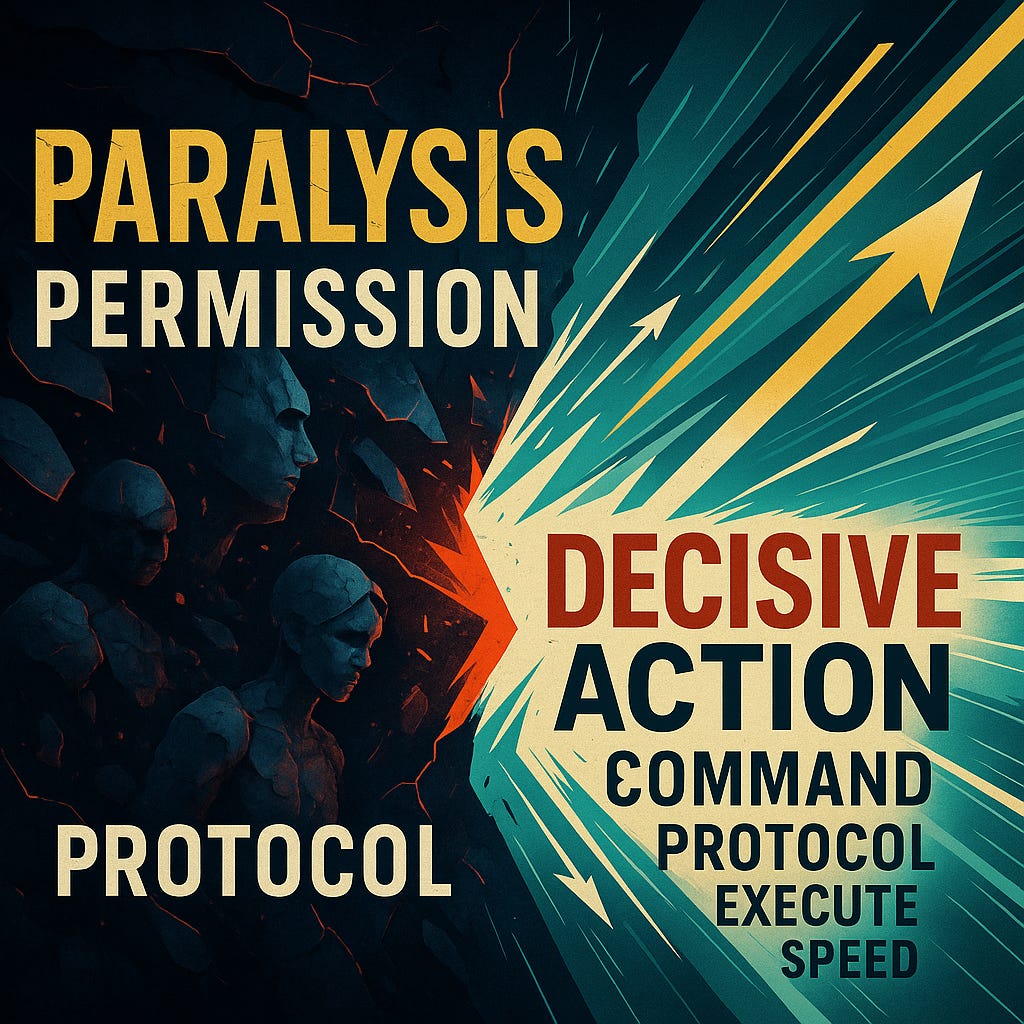72-hour rule: The framework that built my discipline
Every delayed decision is a victory for mediocrity
Most men die at 25 and get buried at 65. The difference between the two dates?
How long they spent optimizing someone else's life.
27 years in uniform. Thousands of split-second decisions under pressure. Men's lives hanging on my judgment calls.
Then I'd come home and spend three weeks "thinking about" whether to have a difficult conversation with my wife.
The cognitive dissonance was destroying me.
In the field, hesitation kills. At home, I was treating every decision like it needed a committee review. While I was "being thoughtful," problems compounded. Opportunities died. My marriage suffered from my paralysis disguised as wisdom.
The most dangerous place to be isn't making the wrong decision. It's making NO decision while life makes choices FOR you.
The Colonel's Paradox
Here's what 27 years of military command taught me about civilian decision-making:
In combat: Information is always incomplete. Time is always short. Action is always required.
In life: We pretend we need perfect information, unlimited time, and guaranteed outcomes.
This is a lie that keeps men passive.
I watched subordinates who could execute flawlessly under fire become paralyzed by choosing a restaurant. I saw leaders who commanded respect in uniform become invisible in their own homes.
The pattern was clear: We had trained ourselves to be decisive under artificial pressure, but weak under real pressure.
The Flip That Changes Everything
Default Aggressive doesn't mean reckless. It means making aggression your operating system.
Most men have it backwards:
Hesitation = Safety → Reality: Hesitation = Guaranteed erosion
"Sleeping on it" = Wisdom → Reality: Procrastination in a uniform
More analysis = Better outcomes → Reality: Analysis paralysis = Death by delay
The military truth: 70% information + immediate action beats 90% information + delayed action.
Every. Single. Time.
The 72-Hour Combat Protocol
This is the system I use now—adapted from military decision-making for civilian life:
Hour 0-24: Intelligence Gathering
Define the decision requiring action
Gather available intel (not perfect intel)
Identify the cost of delayed action
Set the decision deadline
Hour 24-48: Command Decision
Make the call with available information
Announce it to your accountability network
Take the first irreversible step
Lock in—no second-guessing
Hour 48-72: Execute and Adjust
Complete minimum viable action
Document real-world feedback
Course-correct based on results, not fears
Prepare for next decision cycle
Non-negotiable: 72 hours from problem identification to action initiation.
Real Applications:
Career move: 72 hours to research, decide, and submit applications
Relationship issue: 72 hours to plan and initiate the conversation
Health decline: 72 hours to start the program, book the appointment
Financial problem: 72 hours to create plan and execute first step
The Legacy Frame
In my 21-year marriage, I've learned this truth:
Your family doesn't need you to make perfect decisions. They need you to make decisions, period.
A man who acts with 70% certainty and adjusts course is more valuable than a man who waits for 100% certainty and never moves.
Your children are watching. They're learning decision-making from your example—not your intentions.
Show them what ownership looks like.
Next Orders
This framework barely scratches the surface of what separates reactive men from proactive leaders.
In my Legionary Command System, I break down the complete decision-making architecture that's kept me effective through 27 years of military service and 21 years of marriage:
The Command Decision Matrix for high-stakes choices
The 24-Hour Intel Protocol for rapid information gathering
The Accountability Chain-of-Command for civilian life
The After-Action Review System for continuous improvement
Enrollment window: 72 hours.
See what I did there?
Ready to stop asking permission to lead your own life?
Carlos Doria-Col


